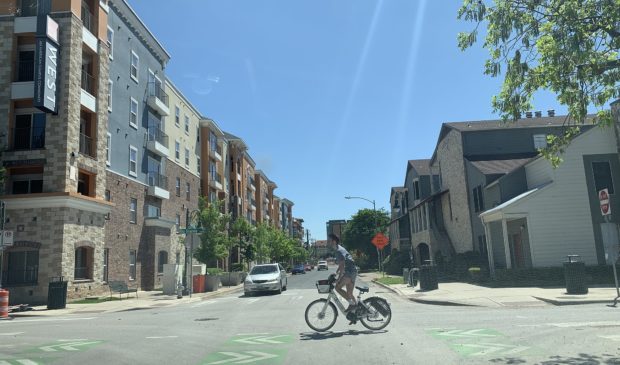Study finds middle-income housing fund outperforms high-dollar real estate
Friday, October 21, 2022 by
Chad Swiatecki An Austin investment fund created to support and stabilize middle-income rental housing has been verified as an attractive and viable investment by researchers from two Texas universities.
Affordable Central Texas, which began acquiring middle-income rental communities in late 2018, has been found to have a higher return (9.4 percent) and lower risk (a spread of 2.6 percent) than similar investments in high-income and luxury properties across the country. The eight-month study from University of Texas associate professor Jake Wegmann and Southern Methodist University real estate researcher Mark Roberts looked at data in Atlanta, Austin, Dallas, Denver, Houston, Phoenix, Seattle, and Washington D.C. from 2011-2021. (New York City, Chicago and Los Angeles were excluded because they lacked enough middle-income assets to meaningfully study.)
The data gathered and analyzed from the National Council of Real Estate Investment Fiduciaries showed that middle-income rental housing performed well and behaved independently of stocks and bonds’ returns, with strong returns despite capital costs that are higher than upper-income housing investments. The study was sponsored by Affordable Central Texas and the Wells Fargo Foundation.
David Steinwedell, president and CEO of Affordable Central Texas, said the findings will help to assure investment advisers at major banks and other institutions that their investments would be stable and successful. Currently the fund owns seven multifamily rental properties throughout Austin, with 1,740 units under its management that keep rents affordable for residents earning between 60 and 120 percent of the local median family income.
“When we put our fund together we modeled out what we thought would happen, but when you’re raising capital the fund advisers want everything verified by a third party. This study verifies what we’ve been experiencing, which is that since the inception of our fund we’ve had returns north of 9 percent,” he said. “The reservations are around the fact that our fund had never been done before and anything that’s new, especially if you’re a bank or financial institution, you’re wary of what to do.”
Wegmann, associate professor for community and regional planning at UT Austin, said the constant and growing demand for moderately priced housing in major cities made the findings unsurprising. He said growing interest in investments focused on environmental, social and governance (ESG) uses could make middle-income housing more of a priority for major organizations, with standards in place to assure health and safety for residents.
“The ultimate vision would be for there to be some kind of defined standard because right now there’s some tension from the investment side because this sounds really great in terms of how it performs in terms of risk and return. If there was a standard it would give policymakers and those living in the buildings the confidence that there is some protection being offered to the people living there.”
Roberts, head of research for SMU’s Folsom Institute for Real Estate, said the study has the potential to change the conventional wisdom in financial circles about what kinds of real estate investments offer the best long-term performance.
“I hope we’ve shed some light on the idea that just because there’s an apartment building where the rents are lower than luxury high-rise apartments that investors seem to be drawn to, that from a financial standpoint they won’t overlook the apartment type that produces higher returns and lower risk,” he said. “The real way to solve the housing affordability problem is to build more but when you look at rising interest rates and how that impacts construction financing … that means the cost of single-family home ownership has gone up about 50 percent.”
With decades of experience in Austin real estate, Steinwedell said the moderate increase in supply due to hit the market soon will help the rising cost of living, though public and private efforts need to work together.
“There are some decent policies that have been put in place recently like Affordability Unlocked that will help some things. There are other challenges like the fact that we can’t get a (building) code change made, and that is really holding us back. There’s got to be a mix of public policy and private sector stuff like we’re doing, and together all of those things can make a difference.”
Photo by Vuemobi, CC BY-SA 4.0, via Wikimedia Commons.
The Austin Monitor’s work is made possible by donations from the community. Though our reporting covers donors from time to time, we are careful to keep business and editorial efforts separate while maintaining transparency. A complete list of donors is available here, and our code of ethics is explained here.
You're a community leader
And we’re honored you look to us for serious, in-depth news. You know a strong community needs local and dedicated watchdog reporting. We’re here for you and that won’t change. Now will you take the powerful next step and support our nonprofit news organization?








